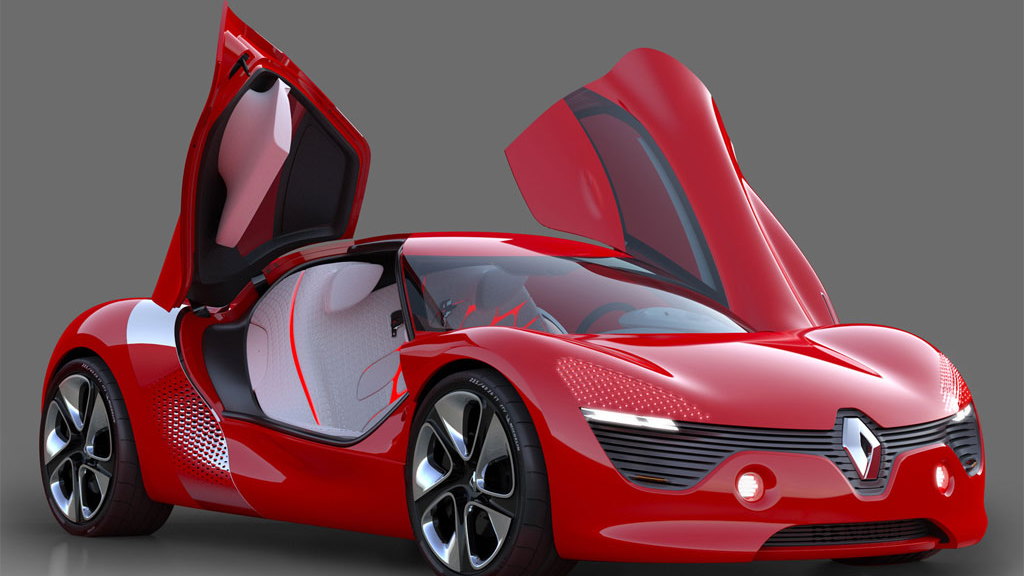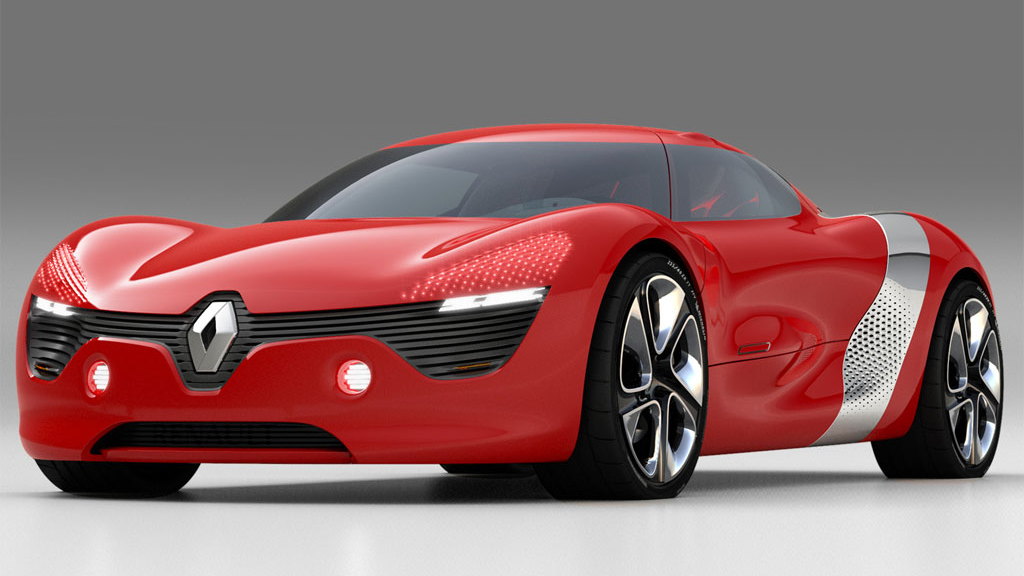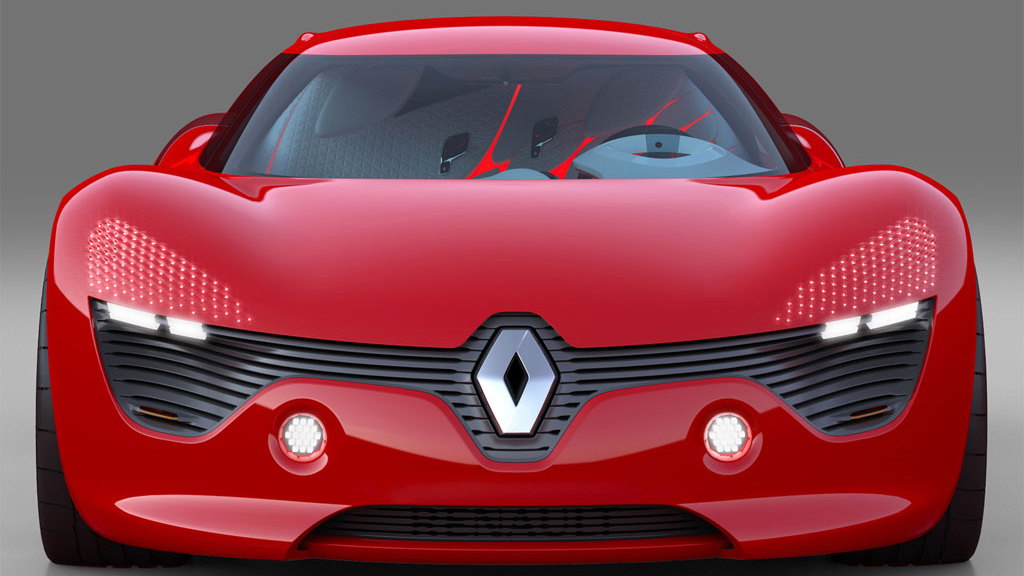Last year, former Mazda design chief Laurens van den Acker, an influential player behind the Japanese automaker’s Nagare and nature-themed designs of late, jumped ship and headed over to the top design post at French automaker Renault. He has since been assigned the task of injecting new ideas and revolutionizing the design of Renault’s future models, and for van den Acker this means more emotional styling.
Previewing his new look is the 2010 Renault DeZir Concept, which is the first of a series of new concepts and will be making its debut at this September’s 2010 Paris Auto Show.
The new two-seater coupe features massive 21 inch wheels and a zero-emissions electric drivetrain. Entry to the vehicle is via a pair of gullwing doors, and once inside passengers are treated to a two-seater bench seat. The absence of a rear window is overcome by the fitment of two rear-facing cameras that provide the driver with a panoramic view of what is happening behind the car.
Power comes from an electric motor mounted in a mid-rear position to optimize weight distribution over the front and rear wheels. The vertically-mounted 24 kWh lithium-ion battery is located behind the seats and provides the car with a range of 100 miles.
The basic motor is the same unit Renault is planning for its first production electric cars due next year, although it has been uprated to 150 horsepower and 167 pound-feet of torque. Charging takes about eight hours using a conventional household plug but Renault envisages a world where owners can switch batteries in an instant via a network of Quick Drop locations. Owners would simply drive up to a Quick Drop location, most likely situated in an existing fuel station, and then remove their depleted battery and replace it with a fully charged one before driving off.
With its electric drivetrain and slippery 0.25 drag coefficient (Cd), the new Renault DeZir Concept should be able to accelerate from 0-62 mph in just five seconds. The DeZir’s energy efficiency package also includes the recovery of deceleration energy. The technology it employs is based on the same principles as the KERS (Kinetic Energy Recovery System) seen in Formula 1. When the car decelerates, kinetic energy is recovered and stored in the battery. In the case of DeZir, this energy can then be employed by the driver to provide a temporary power boost at the moment he or she chooses, using a button located on the steering wheel.
[Renault]






